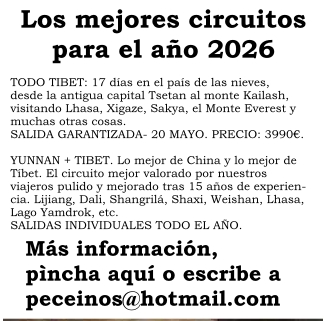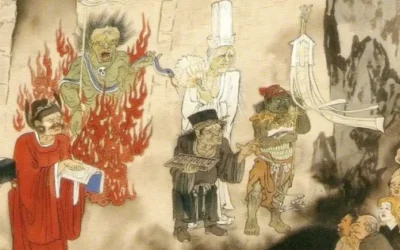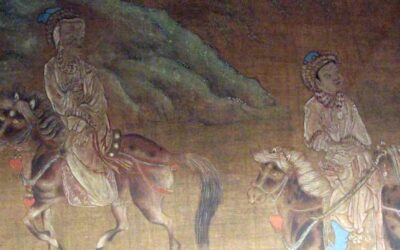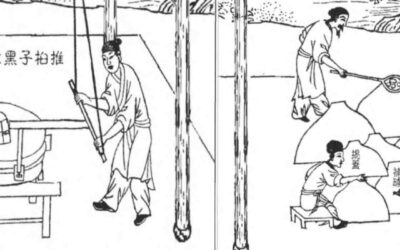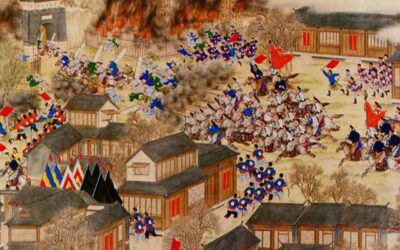The Dong are one of the minorities of China with a large population. According to the census of the year 2000 their population was 3,000,000 people.
They live mainly in Guizhou Province (approximately 1,800,000 people), along a fringe of flat lands that cross the province from north to south. There is also a big Dong population in the southern part of neighboring Hunan Province (about 900,000), and more than 200,000 persons in Guangxi Zhuang Autonomous Region, and a few thousand in Hubei Province (Enshi Prefecture).
The Dong, as do most of the peoples related to them, live near the rivers or in hills generally not of great height. They mainly cultivate rice. They raise domestic animals, especially hens and pigs. The exploitation of the forests, which holds a special spiritual relationship with the Dong, is an activity of economic importance.
They refer to themselves as «Kam.»
It is generally considered that there are two quite different types of Dong, the Dong of the North and the Dong of the South.
There are important linguistic and cultural differences between them. In general those of the north have received more influences from mainstream Chinese culture, while those of the south better conserve the Dong traditions. The typical monuments of the Dong, such as Drum Towers, Bridges of Rain and Wind, and the Temples of the Goddess Mother Sama, are all characteristic of the Dong of the South.
Their language belongs to the Sino-Tibetan family, Dong Dai branch, Zhuang Dong sub-branch. It has two main dialects, understandably called the northern and southern dialects, whose speakers cannot understand each other easily. Each one of these dialects has in turn three clearly differentiated local sub-dialects.
After 1958 an alphabet was invented for their language, but it has not been widely used. Before 1958, they used Chinese characters adapted to their own language.
More posts on China ethnic groups
Herboristeria de medicina china en Weishan, Yunnan
Herboristeria de medicina china en Weishan, Yunnan Todavía se mantiene en China una gran tradición de uso de las medicinas naturales, es decir de las hierbas con propiedades medicinales que se han utilizado desde hace siglos. Y además de estar presentes en la...
Tratar enfermedades con la almohada de un cadáver
LLa Tratar enfermedades con la almohada de un cadáver En una biografía de Xu Sibo[1], un especialista taoísta en terapia con agua[2] del siglo V de nuestra era, leemos: "Había una matrona que sufría de estreñimiento incurable desde hacía muchos años, y cuando Sibo...
La tragedia de la belleza Wang Zhaojun
La tragedia de la belleza Wang Zhaojun El emperador Yuan (48–33 a.C.) tenía un gran harén y no podía reunirse con todas las mujeres del palacio con regularidad. Por lo tanto, ordenó a los pintores que crearan retratos de ellas, y las convocaba para favores basándose...
La economía del arado humano en la China del siglo XVII
La economía del arado humano Según La explotación de las obras de la naturaleza, un libro chino del siglo XVII: En los hogares agrícolas donde no hay bueyes disponibles, los campesinos fijan un palo al arado y dos hombres lo tiran colocándolo sobre sus hombros,...
La rebelión musulmana en Yunnan en el siglo XIX
La rebelión musulmana en Yunnan en el siglo XIX. Esta es la primera traducción al inglés del libro de Émile Rocher sobre la Rebelión Panthay. Publicado originalmente en 1879 como La Province chinoise du Yunnan, es un valioso testimonio de primera mano sobre Yunnan a...
Escenas callejeras de Kunming, Yunnan
Vendedor de ostras en mercado nocturno. Kunming. China. En los últimos años China se ha convertido en uno de los principales consumidores de pescado. Eso ha hecho que incluso en las zonas del interior sea bastante común encontrar pescados y mariscos de mar,...

